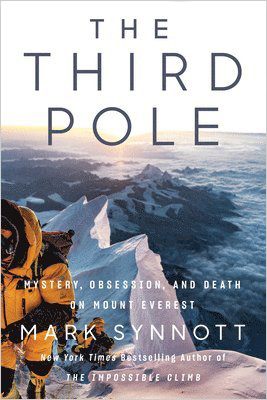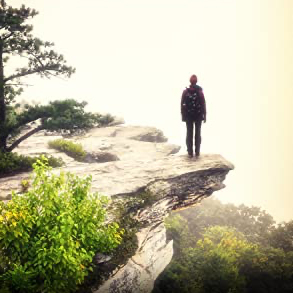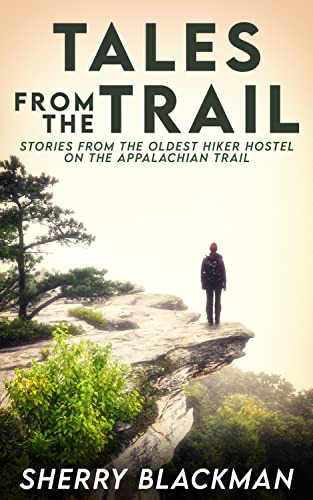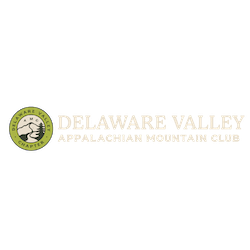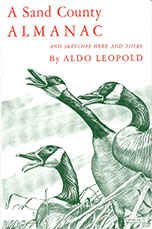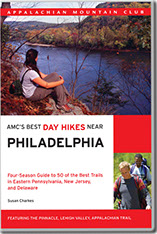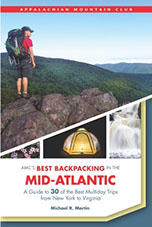by Michael C. Sinclair, MD
CreateSpace Independent Publishing Platform (March 13, 2014)
World-traveling mountaineering surgeon now hikes with AMC-DV and works with Doctors Without Borders
Review by Lennie Steinmetz
Michael Sinclair is a world class mountaineer who has summited Everest, a cardiac surgeon from the Lehigh Valley who has performed more than 4,000 open heart surgeries, a doctor who now travels the world working for Doctors Without Borders, and a member of the DV Chapter of AMC. He recently published an autobiography titled No Regrets, No Apologies which is a most interesting read.
Sinclair was raised in a small town in northern California where athletic prowess was the sole measure of male worth. Inept in all sports, he had a miserable childhood and adolescence. In college he became a nose-to-the-grindstone student and graduated with honors. He completed medical school and went on to become a successful cardiac surgeon. In his late thirties, he was determined to revisit the issue of his apparent incompetence as an athlete. First he ran marathons. Then he began climbing mountains. Mountaineering became a committing avocation which rivaled heart surgery for his attention.”by Michael C. Sinclair, MD CreateSpace Independent Publishing Platform (March 13, 2014)
World-traveling mountaineering surgeon now hikes with AMC-DV and works with Doctors Without Borders
Review by Lennie Steinmetz
Michael Sinclair is a world class mountaineer who has summited Everest, a cardiac surgeon from the Lehigh Valley who has performed more than 4,000 open heart surgeries, a doctor who now travels the world working for Doctors Without Borders, and a member of the DV Chapter of AMC. He recently published an autobiography titled No Regrets, No Apologies which is a most interesting read.
Sinclair was raised in a small town in northern California where athletic prowess was the sole measure of male worth. Inept in all sports, he had a miserable childhood and adolescence. In college he became a nose-to-the-grindstone student and graduated with honors. He completed medical school and went on to become a successful cardiac surgeon. In his late thirties, he was determined to revisit the issue of his apparent incompetence as an athlete. First he ran marathons. Then he began climbing mountains. Mountaineering became a committing avocation which rivaled heart surgery for his attention.”
He launched his climbing career by contacting Rick Wilcox’s climbing school and guide service in New Hampshire. He took private climbing lessons there, then moved on to tackle big mountains like Aconcagua in South America, Mount Vinson and Mount McKinley in Alaska, and Mount Everest, to name a few. Some trips were more successful than others, but his tales about all of them are fascinating. There is a realism and honesty in his descriptions that is refreshing after reading some climbing books whose only goal seems to be to burnish the image of the climber himself.
After retiring from climbing big mountains, Sinclair continued to do rock climbing closer to home. Unfortunately, one of these trips led to his becoming the poster child for the Good Shepherd Home and Rehabilitation Hospital in Allentown. A climbing accident in Delaware Water Gap left him with a collapsed lung, broken ribs, multiple fractures to his back and a broken hip socket. His long and painful, but ultimately successful, recovery led to his being featured on billboards throughout the Lehigh Valley extolling the virtues of Good Shepherd.
He has since gone on to cycle across America, do numerous backcountry ski trips throughout the US and Canada, and join AMC-DV for hiking and skiing adventures. He has also spends much of his time working for Doctors Without Borders with his wife Phyllis. They have taken part in over a dozen international missions, most lasting about six weeks, in places like Libya and South Sudan. The Allentown Morning Call recently ran a lengthy article about Sinclair and his humanitarian efforts, which can be found here. No Regrets, No Apologies is available on line.
He launched his climbing career by contacting Rick Wilcox’s climbing school and guide service in New Hampshire. He took private climbing lessons there, then moved on to tackle big mountains like Aconcagua in South America, Mount Vinson and Mount McKinley in Alaska, and Mount Everest, to name a few. Some trips were more successful than others, but his tales about all of them are fascinating. There is a realism and honesty in his descriptions that is refreshing after reading some climbing books whose only goal seems to be to burnish the image of the climber himself.
After retiring from climbing big mountains, Sinclair continued to do rock climbing closer to home. Unfortunately, one of these trips led to his becoming the poster child for the Good Shepherd Home and Rehabilitation Hospital in Allentown. A climbing accident in Delaware Water Gap left him with a collapsed lung, broken ribs, multiple fractures to his back and a broken hip socket. His long and painful, but ultimately successful, recovery led to his being featured on billboards throughout the Lehigh Valley extolling the virtues of Good Shepherd.
He has since gone on to cycle across America, do numerous backcountry ski trips throughout the US and Canada, and join AMC-DV for hiking and skiing adventures. He has also spends much of his time working for Doctors Without Borders with his wife Phyllis. They have taken part in over a dozen international missions, most lasting about six weeks, in places like Libya and South Sudan. The Allentown Morning Call recently ran a lengthy article about Sinclair and his humanitarian efforts, which can be found here. No Regrets, No Apologies is available on line.
